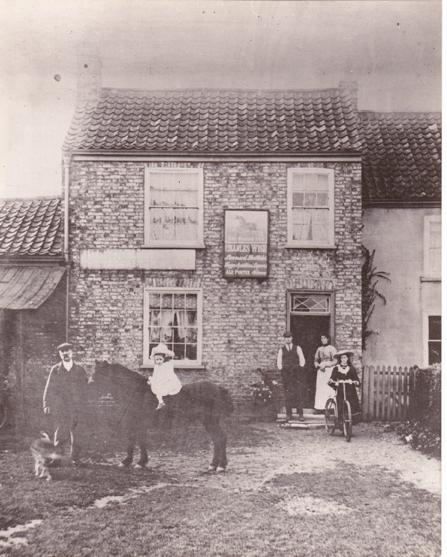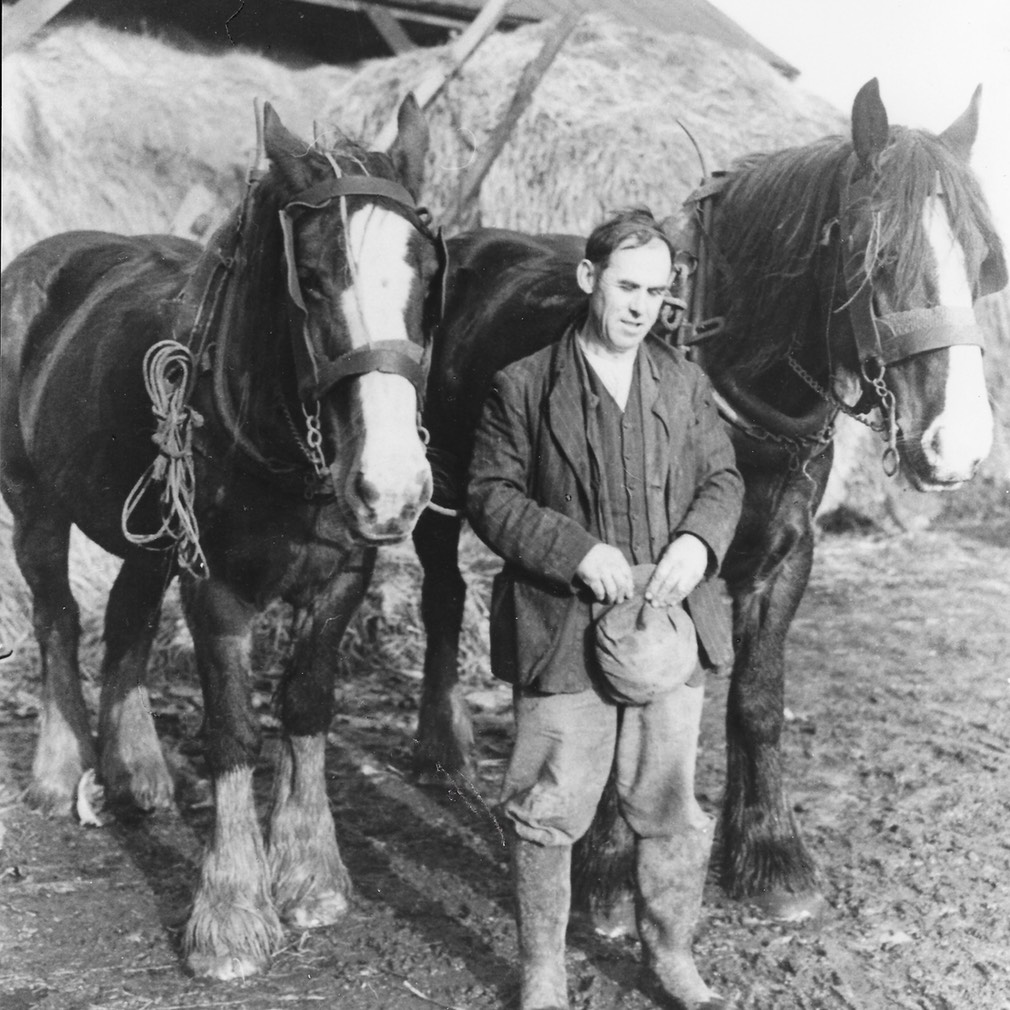MURTON’S Past
Early settlement
On the glacial moraine to the east of York lies a series of settlements: Grimston, Dunnington, Holtby, Warthill, Upper Helmsley and Sand Hutton. Archaeological evidence suggests human settlement along that higher ground since the Neolithic period (c. 4000 to 2000 B.C.). To the north of the moraine on the outskirts of York is low lying land, once very wet, now partly drained, but still sometimes subject to flooding. The village of Murton lies on slightly raised ground within that area. There has been a settlement for a thousand years or more, the name of which, over the centuries has changed: Mortun (its name in William the Conqueror’s “Great Survey”, the Domesday Book of 1086), Mortune, Moreton, Morton, and now Murton. The name simply means town or settlement on the moor and thus is a quite common place name. There are several other Murtons in the north of England.
In 1086 the land at Murton was held by the canons of York Cathedral, some of it subsequently coming into the possession of St. Mary’s Abbey in York. The Township, now the civil parish, of Murton covers an area of about 844 acres (342 hectares). The village lies just three miles from York Minster, yet is still surrounded by agricultural land. The Township boundary probably dates back to Medieval times and has remained largely unchanged over the centuries. Murton was never an estate village. It never had a manor house. The land was mainly or entirely owned by the Manor of Strensall and was held copyhold from the Manor until the 1920s.
The Freeman registers for the City of York record people from Murton gaining the Freedom of the City, thus allowing them to carry on trade and business in the City, from the thirteenth century. The numbers increase through the fourteenth and fifteenth centuries, thus indicating a community of some substance in Murton by that time. The Parish records, from the 1580s, confirm an established settlement, with several extended families living in the village. The Enclosure Agreement of 1661 for part of the land in Murton names some 16 different landholders. The Parish registers record other names, thu s indicating a sizable community by the mid-seventeenth century. The Hearth Tax returns of 1673 suggest 21 properties with about 33 hearths.
Murton village 1796
The first extant plan and survey of Murton Township dates from 1796 and indicates some 20 properties. The first official population census of 1801 records 110 people. In 1796 all but two or three of the properties were in the village, along what was then called Town Street. Within the Township there were some 193 parcels of land, with 46 different owners and 39 different occupiers. Early in the nineteenth century a few properties were built to the north of the Township along Bad Bargain Lane and to the south of the Township along the north side of the turnpike road at Grimston Bar. By 1841 the population had risen to 161 in 36 occupied houses, by 1901 there were 189 persons in 43 houses. So the Township settlement remained small throughout the century.
Murton Village 1900
The Church of St. James.
The origins of Murton’s little church are not known. It is certainly of Medieval date and was a chapel-of-ease to the church at Osbaldwick. Only relatively recently has it been licensed for baptisms, marriages and burials. The church had become dilapidated by the early nineteenth century and was badly damaged by the great storm of 1834, losing its roof. A dispute over responsibility for repairs left it in ruins and a shelter for animals until it was largely rebuilt in 1914. A modern extension was constructed in 2016. The village Wesleyan Chapel of 1862 has now been converted into a dwelling.
The Village Inn has served Murton since at least 1805 in a building that pre-dates 1775. Its first recorded name was The Jerry after the winner of the 1824 St. Leger. For a while it was called the Horse and Jockey, before becoming the Bay Horse. After substantial renovation in 2017 it is now called the Murton Arms.
The village inn The Bay Horse 1902

This picture of the Bay Horse Inn dates from circa 1902. Charles Wise was landlord from 1899 to 1905. Charles, who was born in Sussex, is standing in the doorway with his wife Annie Mary, who was from Somerset. Holding the bicycle is daughter Annie, aged about 12. On the pony is their other daughter Edith Florence aged 2 or 3. After leaving the Bay Horse the family moved to Stape near Pickering.
Murton’s Racing History
In the early nineteenth century Murton became a significant centre for the breeding and training of racehourses. By 1830 a notorious gambler Robert Ridsdale had acquired much of the land and property in Murton, including Murton Hall, for the training of horses. He is reputed to have had, at one stage, over 200 horses. His horse St. Giles won the 1832 Epsom Derby. There was strong suspicion that St. Giles was a four year old, not three years old as required for a Derby runner. From betting on St. Giles and his other horses Ridsdale gained a huge fortune and lived opulently in Murton Hall. But his gambling and excessive expenditure led to his bankruptcy in 1836. The subsequent sale of his property included “One Hundred Dozen of Very Superior Old Wines”. Training of racehorses continued in Murton on a much smaller scale for some years after.
The Twentieth Century.
Up to the beginning of the last century Murton was overwhelmingly an agricultural community. There were few other occupations. Market gardening, providing fruit and vegetables for York and the West Riding, brought increased prosperity. The opening of the Derwent Valley Light Railway in 1913 and the establishment of bus services gradually linked Murton more to York. Regular passenger services on the railway ceased in 1926. Commercial, mainly agricultural, use continued. During World War II Murton Station’s yard was an important petrol depot. There are still three working farms in the village and other land is farmed from outside the parish. The amount of farm land has hardly changed over 300 years. Many of the businesses in Murton are still related to agriculture, notably the large livestock market, the abattoir and meat processing plant, the feed mill and farm supplier, the Museum of Farming and the recently opened petting farm, and a farm veterinary supplies business. Murton became more closely linked to York in the 1930s with building of the White Cross Estate and various commercial properties on the western fringes of the parish on the edge of York. Substantial development has continued in recent times in that area.
The last working horses. Blue Coat farm circa 1955

Within the village a large housing development at Murton Garth in the 1960s and other houses in Moor Lane at the same time substantially increased the population of the village. More recent development has included the replacement of Blue Coat Farm with housing and various infilling.
The Parish Council
A civil parish was established in 1895 and the first Parish Meeting was held in that year. The Parish Council was established in 1936. One of the Council’s first tasks was to make preparations for air raids. The Parish was divided by the opening of the York by-pass in 1972.